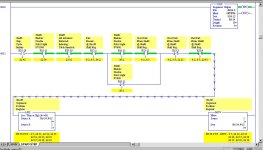Attached is another picture of SQO command. Why is there no condition in the SQO Command. I know the second rung is to move a 1 to N14:12 which is 10 bit long, that is N14:12/1,N14:12/2 and so on.Correct me if I am wrong. What i don't get is why will the programmer do this. After the 1 is moved to N14:12 then what? If he will use the bit in N14:12, why bother to move it there? Well, there must be a reason, it is just that I don't know. Therefore I need help here.Thanks.





